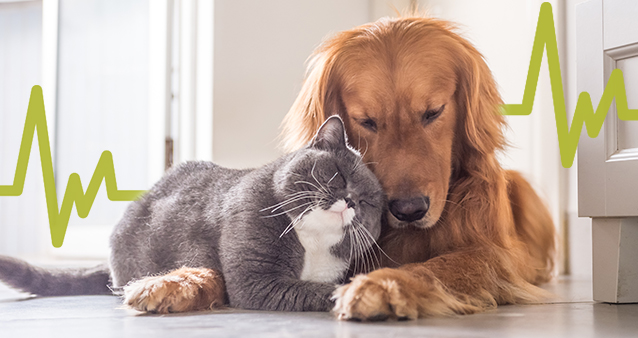Pet Insurance for Creatures, Great and Small

Pet Insurance is vital for protecting your pup or caring for your cat because expecting the unexpected is a given for any pet owner. But how does it work?
Some pets live healthy lives, others require the occasional veterinary intervention, and some will have you on a first-name basis with all your local vets. You love your pet no matter what, but the medical bills after a bout of sniffles or an over-exuberant adventure can rack up fast, so it's smart to have Pet Insurance to help carry the costs.
Pet Insurance vs Pet Medical Aid
Pet Insurance and Pet Medical Aid are different, and in fact, the latter doesn't really exist. Here's why: Medical Aid schemes are regulated by the Medical Schemes Act, which determines the list of Prescribed Minimum Benefits (PMBs) that are offered and the rates that may be charged. "Medical Aid schemes must charge all members the same fees and provide PMBs," says dotsure.co.za Chief Operating Officer David Roache.
"They must also accept anyone who applies. This means they cannot limit risk and the cost of the higher risk must be carried by members, leading to higher premiums. Pet health insurance products are not bound by these requirements; They are flexible and can be tailored to the clients' needs, and certain high-risk patients can be excluded. This ultimately leads to lower risk and, therefore, more affordable premiums."
Since Medical Aid schemes fall under different legislation, they cannot offer other insurance products to their clients. With Pet Insurance, it is possible to add related insurance products, such as third-party liability insurance that covers owners if the insured pet injures someone else.
Bottom line: Pet Insurance is for pets; Medical Aid is for people.
How Pet Insurance Works
With Pet Insurance, owners can choose a plan that suits their budget and pet. They pay monthly or annual premiums to cover claims for treatments or conditions outlined in the plan, regardless of the pet's age.
Read more: Is it better to adopt or shop? Let's look at both.
Pet Insurance generally won't cover pre-existing conditions, and it's not meant for everyday care or continual claims for a chronic condition. Think of it like Car Insurance: it doesn't cover petrol, tyres and washes, but it will or should pay out if you have an accident.
That's because, like Car Insurance, Pet Insurance is a short-term agreement made with an underwriting that is based on a set of calculated risks. As the risk changes – if you claim regularly for your pet or as they age – the premiums will increase to match that risk. And then there are the inevitable annual increases linked to inflation.
Most Pet Insurance products cover domestic dogs and cats. If you have a more exotic pet that's scaly, slithery, feathered, or even a racehorse, you'll need to look for a different kind of cover.
"While there are generally upper and lower age limits at which you can initiate Pet Insurance cover – specific to each policy – once they're covered, they're covered for life, or as long as your premiums are up to date," says Roache.
Pet Insurance Plans and Policies
Every Pet Insurance policy differs, and owners must always read the fine print when looking for the best option.
The benefits that make up a range of plans may include:
- Accidental cover for veterinary treatment and diagnosis of an accidental injury,
- Illness cover for treatment and diagnosis of an illness,
- Third-party liability cover in case your pet injures or damages someone else or their property,
- Hereditary treatment cover for the treatment of hereditary illnesses,
- Plus, other benefits like vaccinations, deworming, microchipping, flea control, nail trimming, sterilisation or neutering, dental check-ups and more.
Learn more: Your pet vaccination checklist
Compare Pet Insurance options on Hippo.co.za, and make sure your cat and/or dog is covered for those expenses.
This article is for informational purposes only and should not be construed as financial, legal or medical advice.
Hippo Blog Categories

































